

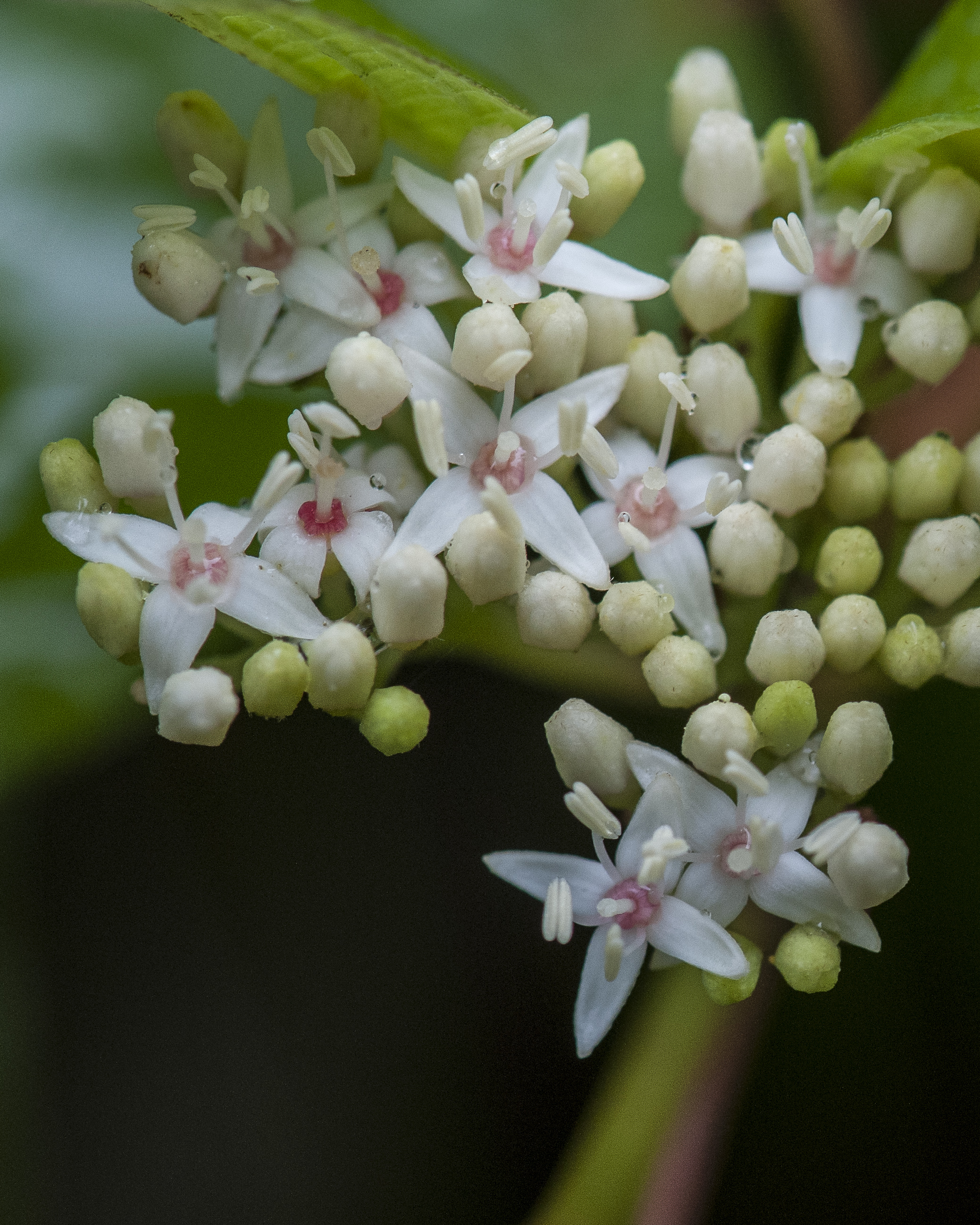 Turkey Run 5/24/17
Turkey Run 5/24/17
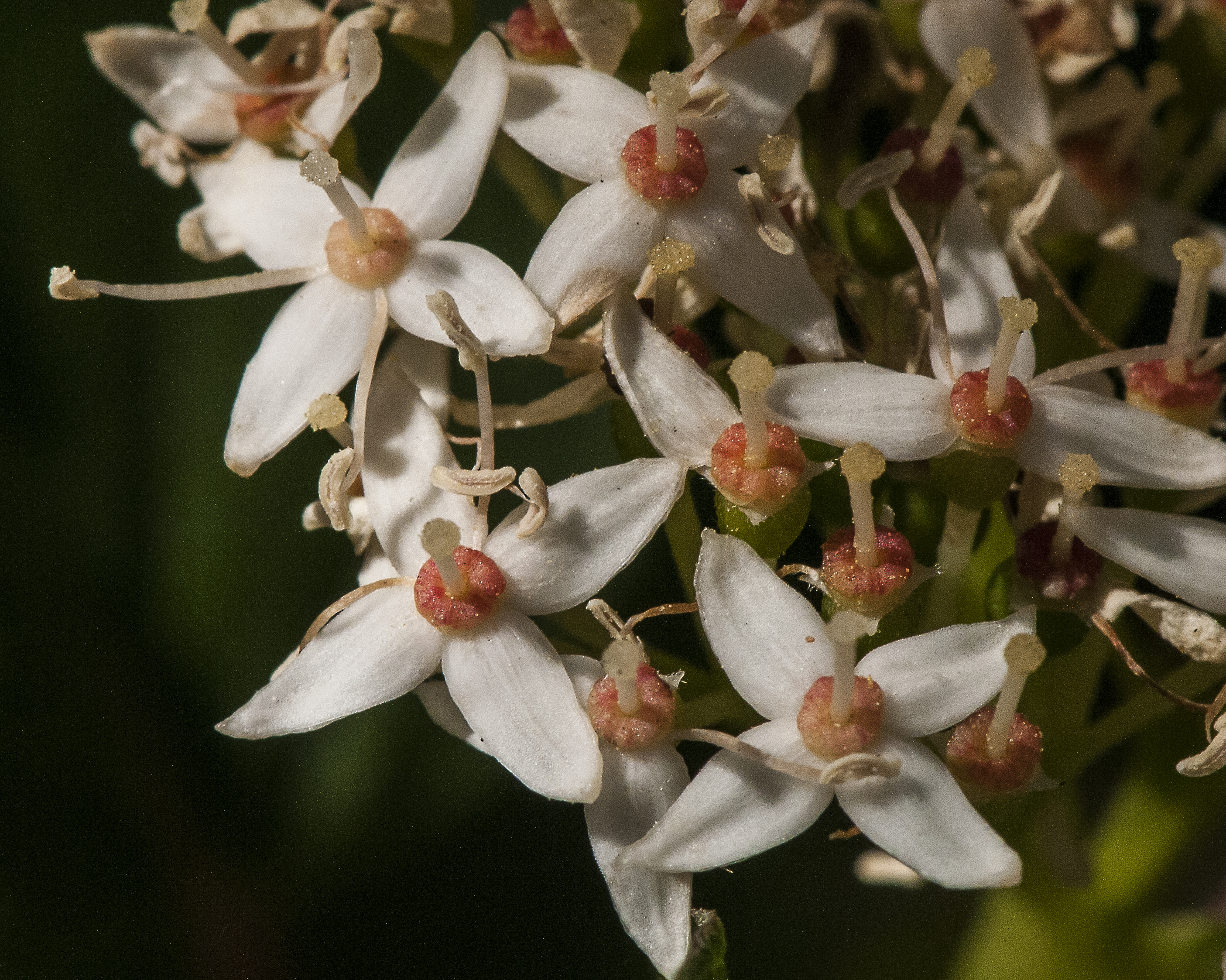
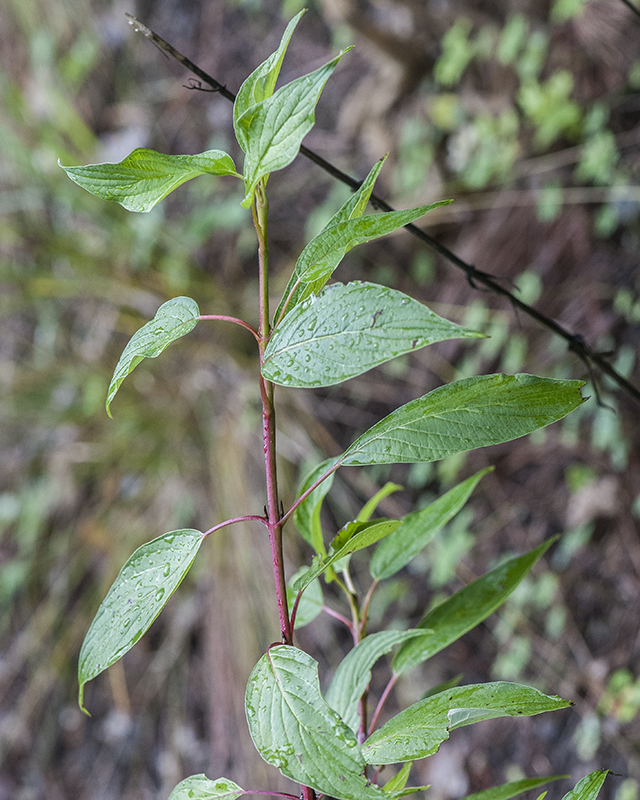
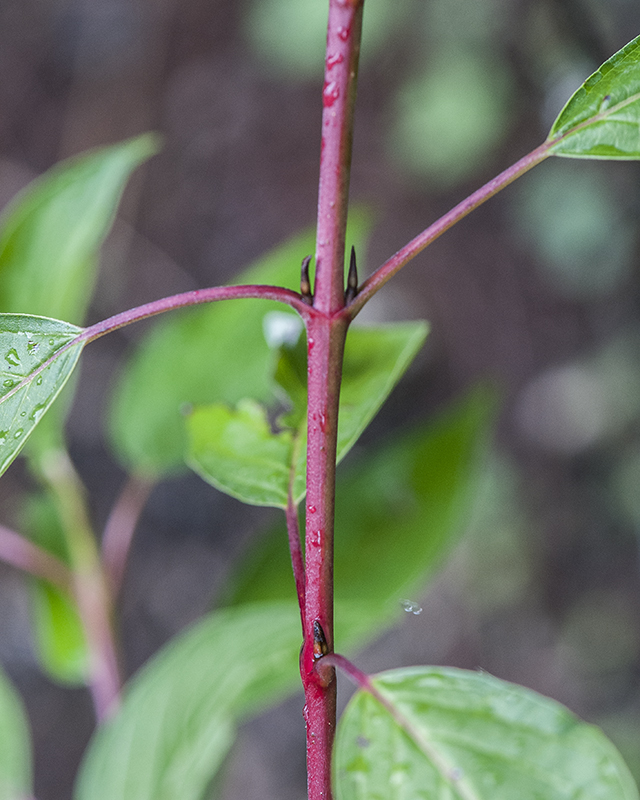
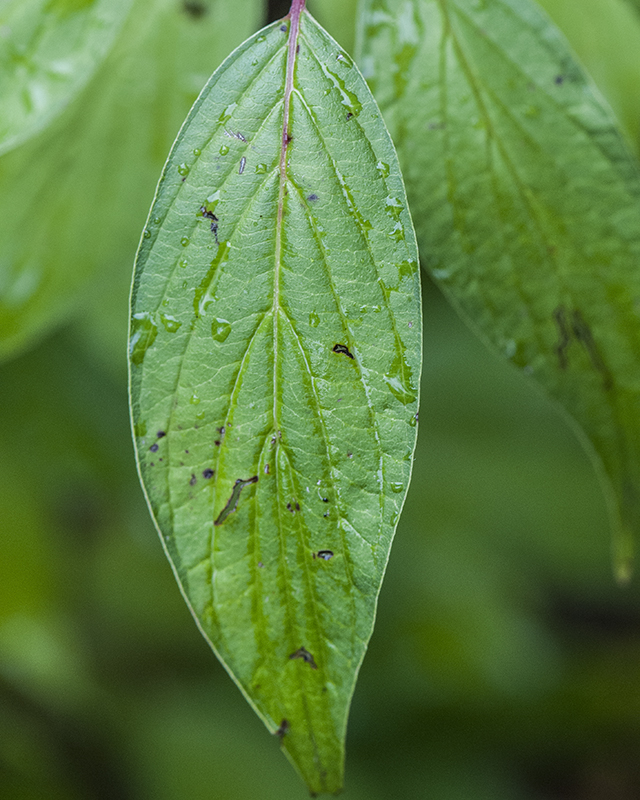
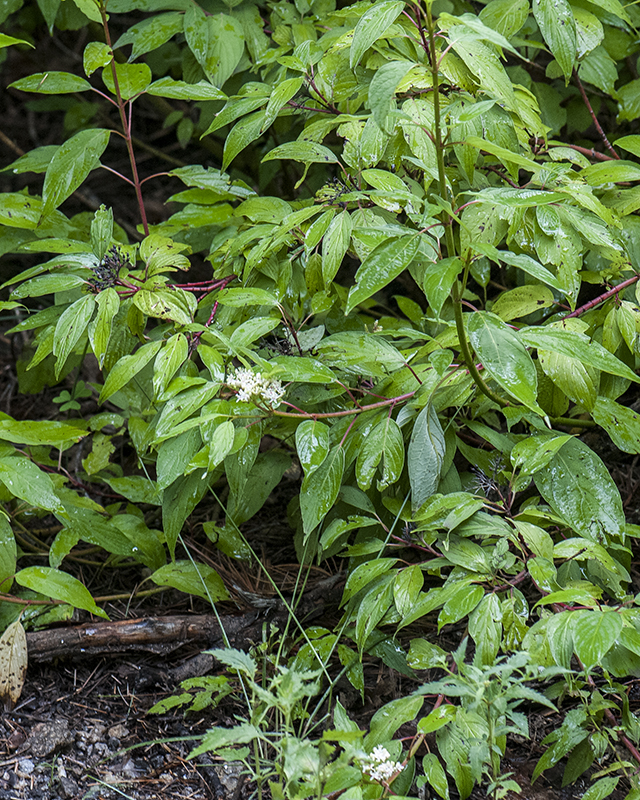 Turkey Run 5/24/17
Turkey Run 5/24/17
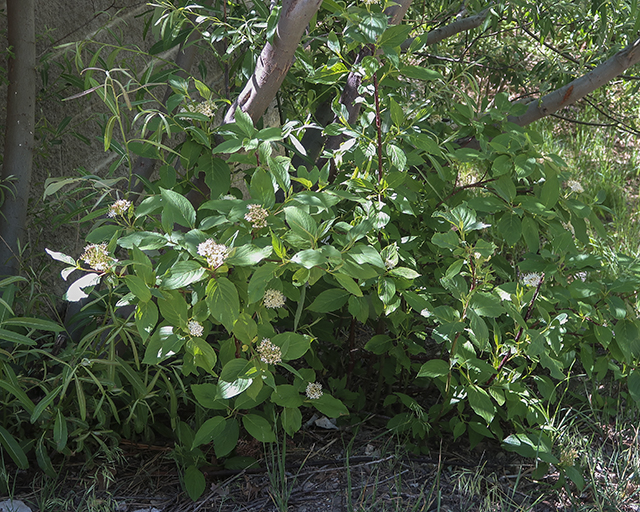
Plant: Shrub generally 1.5-4 m; stem: branches reddish to purple, ± glabrous to minutely strigose; older stems grayish green, generally glabrous. Leaves: deciduous, opposite or whorled, simple; blade generally 5-10 cm, lanceolate to ovate or elliptic, paler beneath, sparsely strigose, veins 4-7 pairs. INFLORESCENCE: cyme, strigose, large, open. Flowers: minute; sepals 4, fused at base; petals 4, 2-4.5 mm; stamens 4, attached to receptacle; style 1, 1-3 mm, thread-like, stigma simple. Fruit: drupe, 7-9 mm, white to cream; stone smooth to grooved on face, furrowed on sides, 1-2-chambered. Misc: Many, generally moist habitats; < 2800 m.
Cultural Significance: Native Americans smoke the inner bark of redosier dogwood in tobacco mixtures used in the sacred pipe ceremony. Dream catchers, originating with the Potawotami, are made with the stems of the sacred redosier dogwood. Some tribes ate the white, sour berries, while others used the branches for arrow-making, stakes, or other tools. In California, peeled twigs were used as toothbrushes for their whitening effect on teeth (Strike 1994). Bows and arrows were made from Cornus shoots. The inner bark is used for tanning or drying animal hides.
Redosier dogwood is used for basket weaving. Sometimes called red willow, both Salix species and Cornus sericea are used interchangeably. Differences in stem color create a multi-hued design element. Indian people from the mid-Columbia River used redosier dogwood to make “ribbons” for basket decorations. If gathered in the early spring, the bark will retain its deep red color when dried and could be mistaken for cherry. The Hidatsa, Arikara, and Mandan made twill plaited burden baskets with two-toned dark and light designs; these baskets were made of willow (Salix nigra), redosier dogwood, and boxelder (Acer negundo) splints. Willow and redosier dogwood were used by the Cheyenne, Arapaho, Kiowa, Pawnee, and Teton Sioux to make a coarsely coiled gambling basket for dice.
Santa Catalina Mountains.
Marshall Gulch
Location: End of road (in the rain) at Aspen Trailhead.
9/10/15
Notes: Turkey Run 5/24/17 adjacent to Summerhaven restrooms.